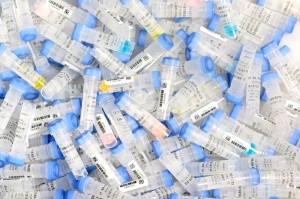Oligo
Posted on: November 21, 2015
Introduction
In the 21st century, further advancements in the technologies in the scientific field have resulted in products for pharmaceutical companies. Oligo is in short of oligonucleotides which are 13 to 25 nucleotides With the manufactured product of oligo, there can be several uses including diagnostic tests for genetic tests, diagnostic tests for infectious diseases, research to discover new drugs or treatments, and production of agricultural products. At small labs held in universities and pharmaceutical companies, the types of oligo include fluorescent dyes, hapten labels, modified bases, and more.
Fluorescent Dyes
Fluorescent dyes of oligo are simply used to detect nucleotides in DNA sequencing, forensic science, and genetic analysis. They are the most common label for synthetic oligonucleotides. Fluorescent dyes of oligo function through the absorption and emission of the wavelengths. The properties of absorption and emission of the fluorescent dyes are affected by the environment, solvent, pH, and the conjugation to molecules. The common fluorescent dyes include FAM, TET, HEX, and JOE.

Hapten Labels
Compared to fluorescent dyes, hapten labels or hapten modifications of oligo that can be detected by antibodies and attaches itself to oligos. Furthermore, they also allow detection, and isolation with antibody based methods. There are many kinds of hapten labels including biotin, dual-biotin, and desthiobiotin. In the field of biochemistry and molecular biology, affinity chromatography magnetic beads are utilized in isolation, separation, and purification of DNA/RNA with these labels. On the other hand, desthiobiotin do not have the great advantage of affinity to biotin. This property provides the desthiobiotin to purify nucleic acids.
Modified Bases
Modified bases of oligonucleotides are important on the oligonucleotide synthesis. They are also used to optimize hybridization. There are many types of modified bases of oligo that include 2-Aminopurine, deoxyUridine, and 2-Amino-DA.
Leave a comment